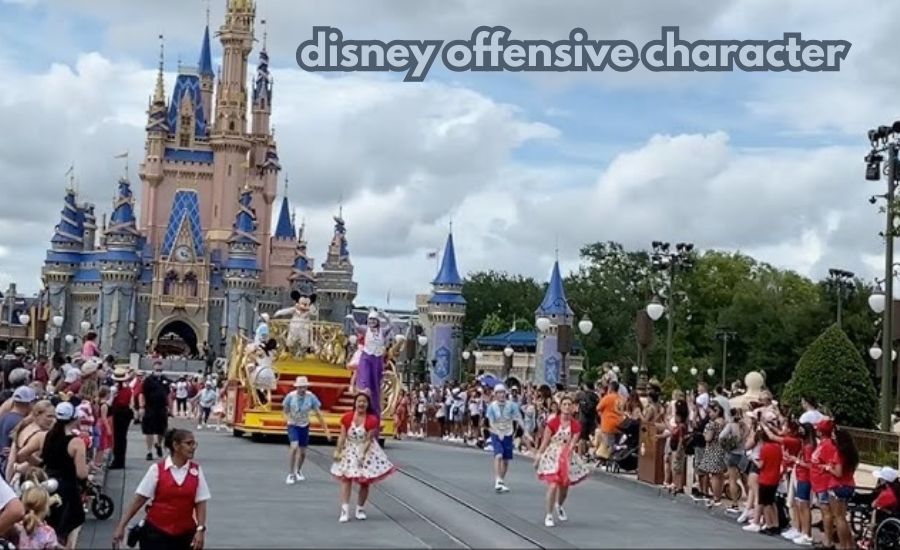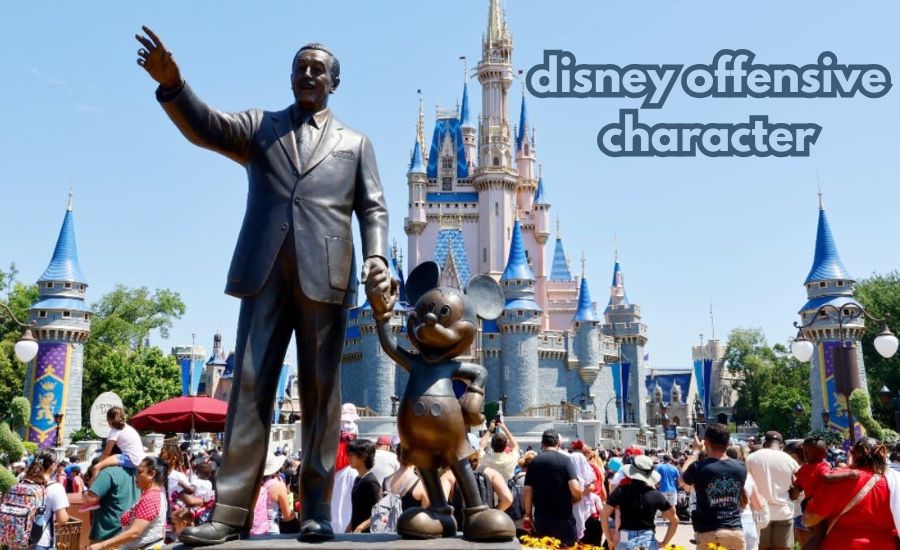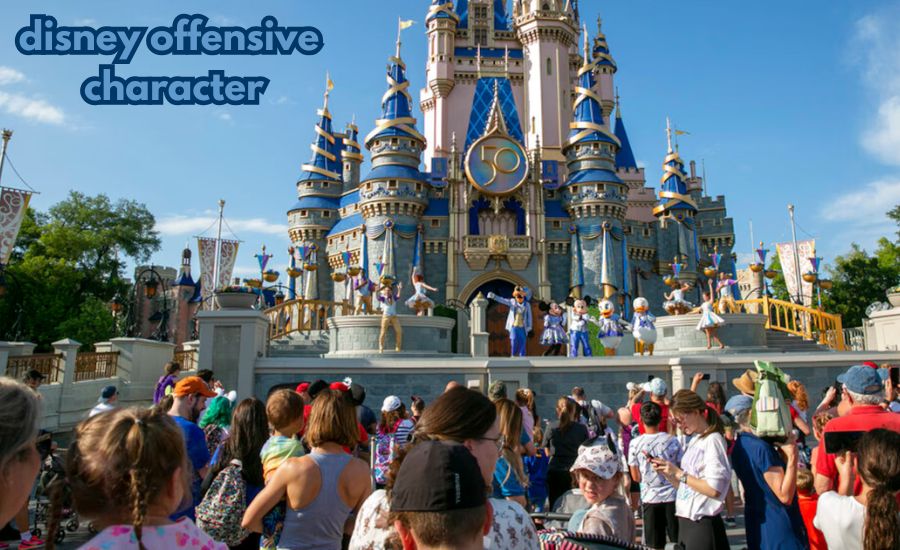When we think of Disney, images of beloved animated movies and characters come to mind. But did you know that some Disney characters have been considered offensive by many people over the years? Disney offensive character is a topic that often sparks debates among fans, critics, and cultural experts alike. In this blog post, we’ll take a deep dive into these controversial characters and explore why some of them have been deemed problematic. Here at US NOWADAYS, we believe in keeping our readers informed about all the different perspectives. So, let’s take a closer look at these characters and understand the impact they’ve had.
The Siamese Cats from Lady and the Tramp (1955): Stereotypes That Didn’t Age Well
The two Siamese cats in Lady and the Tramp are often brought up in discussions about disney offensive character controversial characters. While the movie is a classic, the portrayal of the cats has faced significant criticism. These characters, with their exaggerated accents, sly personalities, and mischievous behavior, reflect cultural stereotypes of Asian people from the 1950s. At the time, it was common for animated characters to be designed with over-the-top traits that mimicked certain nationalities or cultures.
However, looking at it from a modern perspective, it’s clear that these representations can perpetuate harmful stereotypes. The cats’ actions, coupled with their portrayal as sneaky and untrustworthy, align with outdated views of Asian culture. disney offensive character, in recent years, has acknowledged these issues and even added warnings on streaming platforms to ensure viewers are aware of the cultural context.
While it’s important to acknowledge the historical context of these characters, it’s also crucial to understand how they contribute to perpetuating negative stereotypes. Today, Disney strives to represent cultures more respectfully in its modern films.
The Crows in Dumbo (1941): Racial Stereotypes in Animation
Dumbo, another disney offensive character classic, features a group of crows who have become infamous for their controversial portrayal. The leader of the group, named Jim Crow, is voiced by a Black actor and performs in a style that echoes racial stereotypes associated with African Americans during the era. The name “Jim Crow” itself is a direct reference to the laws that enforced racial segregation in the United States.
The crows are often seen as a symbol of the racial issues that plagued America during the 1940s. While their role in the film was not intended to be overtly racist, the negative stereotypes they represent cannot be ignored. The exaggerated dialects and musical styles associated with the crows also tie into harmful portrayals of African Americans in popular culture at the time.
In recent years, Dumbo has been critically reassessed for its handling of racial representation. The inclusion of the crows in the film now serves as a reminder of the social progress needed in the entertainment industry.
King Louie from The Jungle Book (1967): A Misstep in Cultural Representation
King Louie, the orangutan in The Jungle Book, is another disney offensive character that has raised eyebrows for his cultural implications. Voiced by Italian-American jazz musician Louis Prima, King Louie is a jive-talking, swinging monkey who wants to learn the secret of fire. The character has been criticized for reflecting a mix of stereotypes that were seen as disrespectful to African American culture.
Read Next: Hogwarts Legacy 2
The disney offensive character portrayal as a “jive-talking” primate who dreams of imitating human abilities further reinforces cultural stereotypes. It’s important to note that, while Disney aimed to add a fun and musical element to the film, King Louie’s design and personality don’t reflect the nuanced representation that is expected in today’s world.
Modern Disney movies tend to avoid such stereotypical disney offensive character, aiming instead for more thoughtful and authentic portrayals of diverse cultures. King Louie remains an example of how early Disney films reflected the racial and cultural attitudes of their time.

Native American Characters in Peter Pan (1953): A Misguided Representation
Peter Pan is one of disney offensive character earliest animated films, but its portrayal of Native American characters has long been a point of controversy. The film depicts Native Americans as “Injuns,” a term that is considered derogatory and outdated. The characters are also shown as primitive, dancing in stereotypical ways, with exaggerated features and costumes that are not representative of any real Native American tribe.
This depiction is not only offensive but also ignores the rich diversity and complexity of Native American cultures. The film’s approach to representing indigenous peoples reflects the ignorance and lack of understanding that was common at the time. In modern discussions about representation, Peter Pan is often cited as an example of how early disney offensive character films failed to respect cultural sensitivities.
Today, disney offensive character has taken steps to ensure that characters from different backgrounds are portrayed in a more respectful and accurate manner, but Peter Pan remains a reminder of the work still needed in the industry to avoid harmful representations.
The Changing Landscape of disney offensive character Representation: A Step Toward Inclusivity
In recent years, Disney has made a conscious effort to be more inclusive and respectful in its representation of different cultures, races, and backgrounds. Characters like Moana, Tiana from The Princess and the Frog, and Elsa from Frozen showcase Disney’s shift toward more authentic portrayals. These characters are not defined by stereotypes but instead are given depth, personality, and a sense of cultural pride.
The company has also begun to reassess older films, adding content warnings and providing context for problematic characters. These steps are a part of Disney’s larger effort to ensure that their content respects the diversity of audiences and reflects modern values.
While Disney has made strides in improving representation, there’s still room for growth. The company continues to face challenges in balancing entertainment with social responsibility. However, their recent efforts show a commitment to making positive changes that resonate with today’s audiences.

Conclusion
disney offensive character has undoubtedly made significant progress in its portrayal of characters and cultures. However, it’s impossible to ignore the offensive depictions that exist in its early films. Characters like the Siamese cats from Lady and the Tramp, the crows from Dumbo, and King Louie from The Jungle Book serve as reminders of the outdated cultural attitudes that once prevailed in Hollywood. As a leading entertainment company, Disney has a responsibility to represent all cultures in a respectful and accurate way.
Here at US NOWADAYS, we believe in the power of storytelling to shape our views of the world. While Disney’s past mistakes are regrettable, the company’s commitment to inclusivity and cultural sensitivity in its recent films offers hope for a more positive future. With continued efforts toward understanding and representation, Disney can truly live up to its mission of bringing joy and entertainment to audiences of all backgrounds.
FAQs
Q: Why are some Disney characters considered offensive?
A: Some disney offensive character characters are considered offensive because they reflect outdated stereotypes or cultural biases, which can perpetuate harmful views about certain groups of people.
Q: How has Disney addressed offensive characters in its older films?
A: Disney has added content warnings to some of its older films and provides context for problematic characters to help viewers understand the cultural sensitivities of the time.
Q: What steps is Disney taking to be more inclusive in its films?
A: Disney has been working to include more diverse characters, cultures, and backgrounds in its recent films, such as Moana and The Princess and the Frog, to provide more accurate and respectful representations.
Q: Is it important for Disney to change its old characters?
A: Yes, it is important for Disney to reevaluate old characters to ensure that they reflect modern values of inclusivity, respect, and cultural sensitivity.
Explore the Latest Blogs on: Us Now A Days










